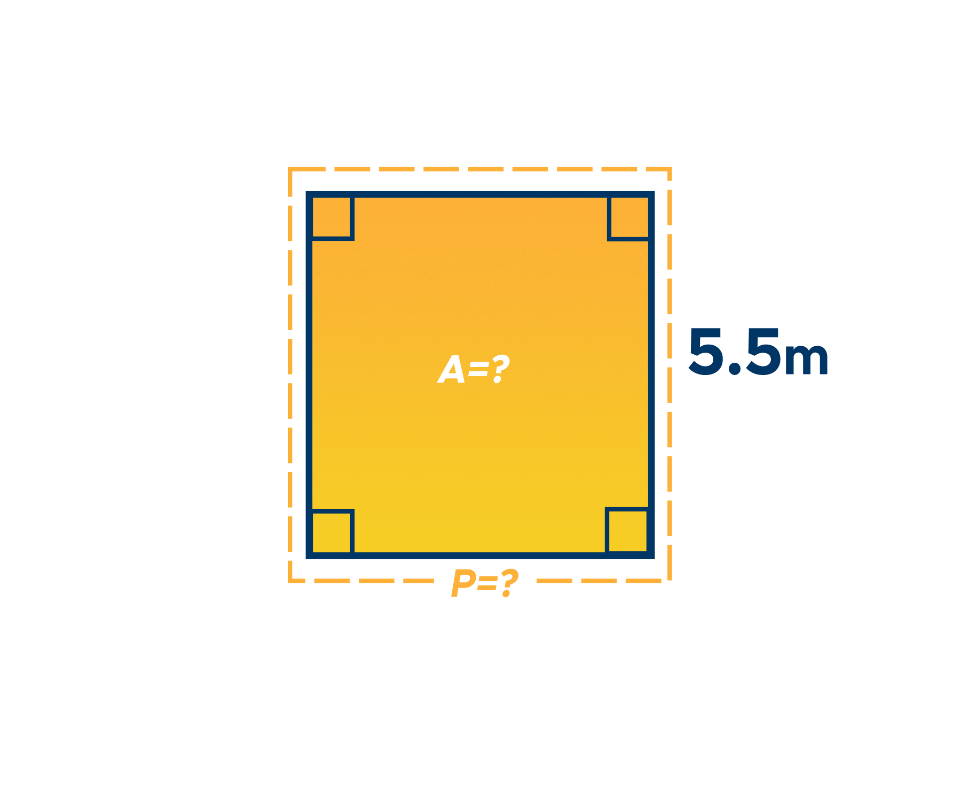A square is a shape with four equal sides (equilateral) and four equal angles (equiangular). It’s the only equilateral and equiangular quadrilateral. Here’s a quick guide to computing the perimeter of a square.
What is the Perimeter of a Square?
As previously discussed, perimeter is the total length of a closed shape. To find the perimeter of a square, add up all its four sides as expressed in the formula:
P = s+s+s+s or P = 4s
where: s = length of the square’s side
Example. Find the perimeter when given a length of 5m.
P = 4s
Let s be 5m
P = 4 (5m)
P = 20m
The illustration below shows the formulas for the area and perimeter of a square:

Want to learn more about finding the area of a square?
Related Reading: Area of a Square – Formula & Examples
Example #1: Compute the perimeter of a square with a length of 11 inches.

Solution for Example #1:
Substitute 11 inches for s in the perimeter formula, P = 4s.
P = 4(11 in)
P = 44 in
Therefore, the perimeter is 44in.
Example #2: Find the perimeter when given a length of 5.5 meters.

Solution for Example #2:
Substitute 5.5 meters for s in the perimeter formula, P = 4s.
P = 4(5.5 m)
P = 22 m
Therefore, the perimeter is 22m.
Thank you for reading. We hope it’s effective! Always feel free to revisit this page if you ever have any questions about the perimeter of a square.
Check out some of our other blog posts or invest in your future with one of our self-study courses!



